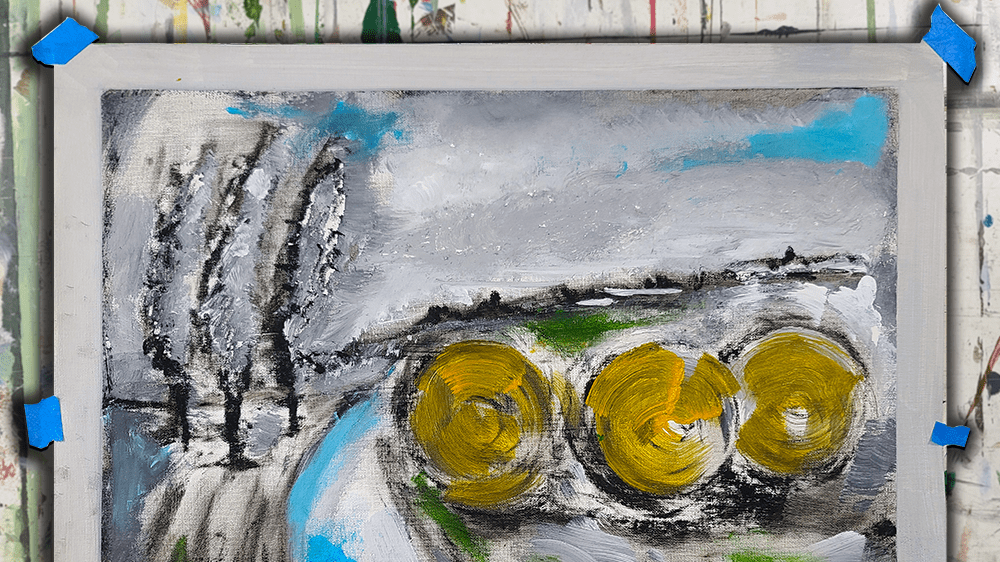Estimated reading time: 5 minutes
In this Blog
- Introduction: Why Mural Storytelling Matters
- Step 1: Listening First – The Root of Community-Based Mural Design
- Step 2: Mural Concept Development Through Story Mapping
- Step 3: How to Design a Meaningful Mural Using Narrative
- Step 4: Painting Murals That Tell Stories
- Step 5: Case Studies – Community Mural Storytelling in Action
- Step 6: Why Mural Storytelling Makes Art Memorable
- Want a Story-Based Mural? Start Here.
- 🎨 Did You Know?
- Conclusion: Every Wall Holds a Story
- Related Links
Introduction: Why Mural Storytelling Matters
Murals do more than brighten up buildings — they carry meaning, memory, and emotion. When designed with intention, murals become storytelling murals that resonate with communities for years to come. As an artist, I don’t just paint pictures — I tell stories on walls.
In this post, I’m sharing how I use mural storytelling to create art that connects deeply with people and place.
Step 1: Listening First – The Root of Community-Based Mural Design
The first brushstroke begins long before I pick up a brush. It starts with listening — to the community, to a client’s vision, or even to the history of the space. Community-based mural design begins with connection.
When designing a mural for a public wall, I ask questions like:
- What stories matter here?
- What emotions live in this space?
- Who will see this mural every day?
These stories become the emotional anchors that guide the artwork. This phase is essential in any public art with impact.
Step 2: Mural Concept Development Through Story Mapping
Once I’ve gathered stories and inspiration, it’s time to map them visually. This is the heart of mural concept development.
I break down key messages into symbols, colors, characters, or patterns. I look for visual metaphors and themes that can communicate without words. The mural planning process includes mood boards, sketching, and a lot of refining.
For example, a story about community resilience might be represented through a tree with deep roots and new blossoms.
Step 3: How to Design a Meaningful Mural Using Narrative
Now that I have the story elements, I begin shaping the mural layout. This step is all about pacing and flow — much like a comic book or a short film.
A meaningful mural uses focal points and direction to guide the viewer’s eye across the story. Each section of the mural acts like a chapter, with transitions that hold the narrative together.
Step 4: Painting Murals That Tell Stories
This is when the wall begins to speak.
Painting a mural is a deeply intentional process. I start with large shapes and color blocks, then build up the detail — each stroke reinforcing the story’s message. It’s storytelling through art in real-time.
Each element serves the mural’s narrative. It can be the eyes of a portrait, the movement of a wave, or a hidden symbol.
Step 5: Case Studies – Community Mural Storytelling in Action
1. Pennswood Village Bistro – “Gathering in Paris”
This mural is a tribute to community. It highlights connection. It was created for the heart of Pennswood’s community center. I integrated elements from Paris residential areas — all inspired by conversations with residents. The mural wraps the bistro space with a warm, familiar narrative of togetherness.
2. Edward Hicks Painter for Hire.
In 2022, Dubus Studio completed a mural honoring Edward Hicks. He was a renowned 19th-century folk artist and Quaker minister. The mural was painted on the very building where he was born in Langhorne, Pennsylvania. This project was part of a broader initiative. The Langhorne Council for the Arts sought to celebrate Hicks’ legacy. They also aimed to honor his iconic “Peaceable Kingdom” series. The mural, designed by Jean-Marc Dubus, features a window frame with a portrait of Hicks. It also includes a lion and elements from his famous painting. These elements symbolize peace and harmony. The unveiling coincided with “Hicks Day.” This community event included historical reenactments and lectures. It fostered a deeper connection between the town and its artistic heritage. This mural is a testament to Edward Hicks’ enduring influence. It bridges the past and present through public art.
Step 6: Why Mural Storytelling Makes Art Memorable
People remember murals because they feel something when they see them. It’s not just the color or size — it’s the story that stays with them.
When murals are built on real stories — whether personal or communal — they create connection and conversation. That’s the goal of every mural I paint.
Want a Story-Based Mural? Start Here.
If you’re ready to create a mural with purpose, let’s collaborate.
- 🧰 Download the Mural Prep Checklist
- 📩 Reach out via my contact form
- 🎨 See more behind-the-scenes on Instagram
Murals that tell stories start with real people, just like you.
🎨 Did You Know?
- Murals are one of the oldest forms of art, dating back over 40,000 years to prehistoric cave paintings.
- Murals can transform public spaces, improving community pride and reducing graffiti vandalism.
- Many famous artists, like Diego Rivera and Keith Haring, started their careers creating murals.
Conclusion: Every Wall Holds a Story
A mural is more than surface decoration at the end of the day. It’s a story captured in color and shape. I design murals not just to be seen, but to be felt and remembered.
Want your wall to tell a story that matters? Let’s talk.
Related Links
Looking to Bring the Magic of Storytelling to Your Own Space?
- Turn your vision into reality!
- Let’s discuss how a collaborative mural project can inspire your community.
- Discover the benefits of a mural creation and contact me today for a free consultation!


Leave a Reply